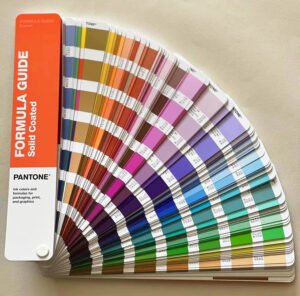Introduction
Food packaging plays a critical role in protecting products, ensuring safety, and maintaining brand trust. For food brands, it is essential to choose food-grade materials that comply with international safety standards while supporting sustainability goals.
This guide highlights the most widely used food-safe materials in the packaging industry, including paper, plastics, inks, and adhesives, to help you make informed decisions for your brand.

Food-Grade Paper and Board
Paper and board are among the most popular eco-friendly food packaging materials. They are versatile, recyclable, and customizable for a wide range of applications.
- Bleached Kraft Paper: Strong, printable, and widely used for bakery bags, sandwich wraps, and disposable cups.
- Unbleached Kraft Paper: Natural brown look, ideal for sustainable takeaway bags and wraps.
- Food-Grade Paperboard: Commonly used for cereal boxes, frozen food cartons, and pizza boxes. Often coated with a thin food-safe layer to resist grease and moisture.
- Greaseproof and Parchment Paper: Specially treated to block oil and moisture, perfect for bakery packaging.
✅ Keyword Targets: food-grade paper, food-safe paperboard, eco-friendly food packaging
Food-Grade Plastics
Plastics remain essential for extending shelf life and preserving freshness. Only specific types are considered food-safe.
- PET (Polyethylene Terephthalate): Lightweight, transparent, recyclable. Common in beverage bottles, salad containers, and snack trays.
- HDPE (High-Density Polyethylene): Moisture- and chemical-resistant. Used for milk jugs, yogurt tubs, and food storage containers.
- PP (Polypropylene): Heat-resistant and suitable for microwaveable trays and ready-meal packaging.
- LDPE (Low-Density Polyethylene): Flexible and durable, found in cling film, bread bags, and squeezable bottles.
❌ Not all plastics are safe for direct food contact. Always verify compliance with FDA, EU, or regional safety standards.
✅ Keyword Targets: food-grade plastic, safe plastics for food packaging, PET, HDPE, PP, LDPE
Food-Safe Inks for Printing
Printing is essential for branding, but inks must be carefully selected. Food-safe inks ensure vibrant colors without compromising consumer safety.
- Water-Based Inks: Low VOC emissions, widely used for paper and cardboard packaging.
- Soy-Based Inks: Renewable and eco-friendly, providing bright and stable colors.
- UV-Curable Inks: Durable and resistant, often applied to labels and flexible films.
👉 For direct food contact, only specially certified inks should be used. In most cases, inks are applied on outer packaging with protective barriers.
✅ Keyword Targets: food-safe ink, food packaging printing, eco-friendly printing inks
Food-Grade Adhesives
Adhesives are indispensable in food packaging for sealing cartons, laminating films, and attaching labels. Food-grade adhesives are formulated to avoid harmful migration.
- Water-Based Adhesives: Safe and cost-effective, widely used for cartons and paper packaging.
- Hot-Melt Adhesives: Strong and efficient, ideal for carton sealing and tray packaging.
- Solvent-Free Laminating Adhesives: Provide strong bonding while meeting food contact regulations.
Adhesives must comply with FDA 21 CFR, EU Regulation (EC) No. 1935/2004, and other applicable standards.
✅ Keyword Targets: food-safe adhesive, food packaging glue, food-grade laminating adhesive
Key Considerations for Food Brands
When selecting food-grade packaging materials, brands should evaluate:
- Regulatory Compliance: Ensure all materials meet FDA, EU, or local standards.
- Sustainability: Choose recyclable, compostable, or biodegradable options.
- Barrier Properties: Ensure resistance to grease, moisture, or oxygen for extended shelf life.
- Branding Potential: Packaging materials should allow high-quality printing for strong shelf impact.
Frequently Asked Questions About Food-Grade Materials
Q1: What does “food-grade” mean?
Food-grade means a material is safe for direct or indirect food contact, meeting standards like the FDA (U.S.) or EU food contact regulations.
Q2: Which plastics are considered food-safe?
Approved food-grade plastics include PET, HDPE, PP, and LDPE. Materials like PVC and polystyrene are less suitable for direct food contact.
Q3: Are food-safe inks really necessary?
Yes. Food-safe inks prevent harmful migration and comply with safety laws. Most inks are applied externally with protective barriers.
Q4: What certifications should I look for?
Key certifications include:
- FDA 21 CFR (U.S.)
- EU Regulation (EC) No. 1935/2004
- ISO 22000 or BRCGS Packaging Standard
- FSC-certified paper for sustainable sourcing
Q5: How can I make food packaging eco-friendly?
Opt for eco-friendly food-grade materials such as recyclable paperboard, biodegradable coatings, and soy-based inks. Combining safety with sustainability builds brand trust.
Recommended Resources
- FDA – Food Contact Substances Regulations
(Official guidance on food-grade plastics, adhesives, and other food contact materials in the U.S.) - FSC – Certified Paper and Sustainable Packaging
(Information on FSC-certified paper and how it ensures sustainable, responsible sourcing for packaging materials.)
Conclusion
Choosing the right food-grade materials is crucial for protecting consumers and strengthening brand reputation. Whether you use paper, plastic, inks, or adhesives, compliance with food safety standards and sustainability practices should guide every decision. By prioritizing food-safe and eco-friendly packaging, your brand can stand out in the competitive food industry.



